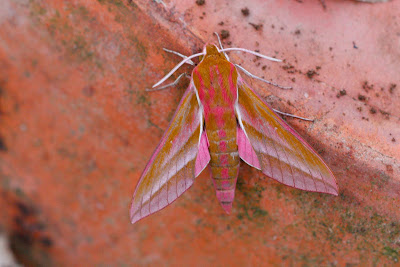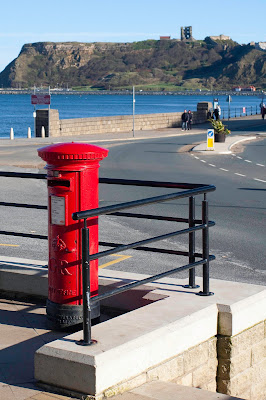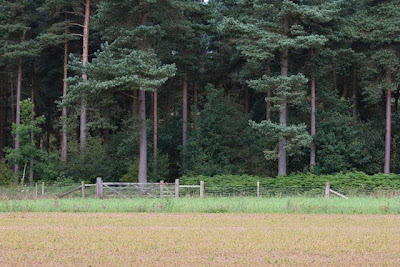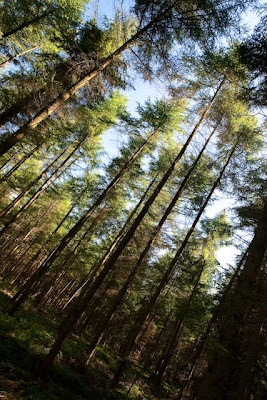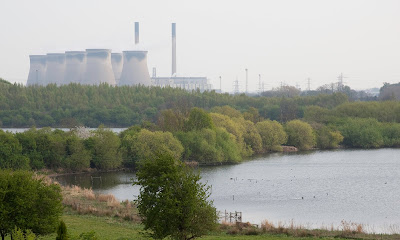OCA COURSE
THE ART OF PHOTOGRAPHY
IAN GLAVES
504473
ASSIGNMENT 1: Contrasts
Pairs:
001-002 Black/White
These are two images from my collection of several thousand bird photographs, and were not taken specifically for this assignment. Blackbirds are commonplace, but the Mediterranean Gulls are rare visitors. We have up to 6 wintering in Scarborough, God knows why, as their name implies, they come from warmer climes!
001: Blackbird.
Camera: EOS 1D Mk3
Lens: Canon EF 70-300 DO zoom @ 270mm.
Aperture priority, F8, 1/100 sec., ISO 800, fill-in flash.
Image cropped, saturated 10%, sharpened.
002: Mediterranean Gull in flight.
Camera: EOS 1D Mk3
Lens: Canon EF 70-300 DO zoom @ 300mm.
Aperture priority, F8, 1/1600 sec., ISO 800.
Uncropped image, lightened 1.5 stops, sharpened.
003-004 Sharp/Blunt
Nails have a sharp end and a blunt end. These close-ups were taken on a tabletop in my garage. I like the "security fence" impression of the nail points, but I'm not sure the blunt image works.
003: Nail points.
Camera: EOS 40D
Lens: Sigma 150mm F2.8 macro
Aperture priority, F5.6, 0.5 sec., ISO 800.
Natural light, tripod.
The nails were mounted a couple of inches above a black cloth.
Original image flipped top to bottom, converted to grayscale and sharpened in "Lightroom".
004: Nail heads.
Details as for 003, but exposure 1sec, @F8 using built-in flash for a little sparkle.
Converted to grayscale and sharpened.
005-006 Broad/Narrow
Between the seafront (Sandside) and the old town, there are several narrow passageways with steps leading up to the boarding houses and fishermens cottages, often called "ginnels". I thought one of these would make a good contrast with the Valley Bridge, one of the wider roads in Scarborough. In photographing the passageways, I found old streets and buildings on the harbourside that I don't remember ever having been down, so I had a good time taking some snapshots for future reference. Valley Bridge used to be the suicide centre of the North until some benefactor paid for the railings, now a prominent feature.
005: Passageway.
Camera: EOS 1D Mk3
Lens: Canon EF 17-40 F4 zoom @40mm.
Aperture priority, F8, 1/125 sec., ISO 200
Hand held because of pedestrians present.
Image cropped, saturated 10%, sharpened.
006: Valley Bridge.
Details as 005, but lens @ 17mm.
Lightened ½ stop, saturated 10%, sharpened.
007-008 Many/Few
There are many pebbles on Burniston beach. A few get trapped in depressions in the rocks and erode holes with the action of the sea.
007: Pebble beach.
Camera: EOS 1D Mk3
Lens: Canon EF 28-135 zoom @35mm.
Aperture priority, F11, 1/400sec., ISO 200
Tripod.
Image saturated 10% and sharpened.
008: Pebbles on rock.
As 007, but lens @ 135mm and shutter 1/320 sec.
009-010 High/Low
I chose to interpret this pair as high and low viewpoints. The high shot is from Spa Bridge looking into the "hole in the road", South Bay, Scarborough. The low shot is from the opposite direction. There wasn't much colour in either scene, so I converted both to grayscale (click of a button in "Lightroom").
009: Hole in the road from Spa Bridge.
Camera: EOS 1D Mk3
Lens: Canon EF 17-40 F4 zoom @17mm.
Aperture priority, F8, 1/100 sec., ISO 200
Tripod.
Image converted to grayscale and sharpened.
010. Spa Bridge from the hole in the road.
As 009, but F8, 1/90 sec., ISO 100.
011-012 Large/Small
I live in a rural area with several farms around. Darryl is an agricultural contractor, and this is his (very) big tractor. They cost about £100,000. The toy copy is given away free with the big one!
011: Darryl's big tractor.
Camera: EOS 1D Mk 3
Lens: Canon EF 17-40 F4 zoom @24 mm.
Aperture priority, F8, 1/40 sec., ISO 200
Hand held (Darryl was in a hurry).
Saturated 10% and sharpened.
012: Darryl's little tractor.
As above, but taken at 40mm setting, and 1/90sec.
013/014 Sour/Sweet
I tried to avoid the lemon cliché for sour and used a cooking apple instead. It was turned into my favourite sweet- apple pie. At least enjoyed eating the subject!
013: Cooking apple.
Camera: EOS 1D Mk3
Lens: EF 50mm macro F2.5
Aperture priority, F7.1, 1/320sec., ISO 200
Natural light from kitchen window.
Image cropped, saturated 10%, sharpened.
014: Apple pie and Ice-cream.
As above, but with off camera flash via a reflecting brolly overhead.
Manual exposure F8, 1/125sec., ISO 100
Cropped to plate edge, saturated 10%, sharpened.
015/016 Liquid/Solid
I scavenged some mercury from an old sphygmomanometer for the liquid part of this, and had great fun chasing it around a dish, watching it break up and coalesce "Terminator 2" style. (It's toxic, so don't try this at home folks!). I like the idea of liquid metal/solid water, and tried to reflect this with ice cubes. I was my intention to build a solid wall of ice cubes, but I couldn't get them to stand up, so I ended up photographing a solitary cube before it melted. I'm not sure it works. I converted both images to grayscale. There is also a round/square contrast here.
015: Mercury.
Camera: EOS 40D
Lens: EF 50 mm macro F2.5
Aperture priority, F8 1/50sec., ISO800
015 cont.
Tripod
Natural light from window.
Image cropped square, grayscale, sharpened.
The mercury was dirty, and heavy use of the clone stamp tool in Photoshop Elements was required to clean up the dust.
016: Ice cube.
Camera: EOS 1D Mk3
Lens: EF 50mm macro F2.5
Aperture priority, F5.6, 2sec., ISO 100
Tripod.
Natural light.
Ferrybridge power station and Fairburn Ings RSPB Reserve.
This landscape was taken for a talk I gave on Birdwatching in Yorkshire, and contrasts the industrial scene of the power station with the tranquil greenery and water of the bird reserve. If the habitat is right, wildlife will co-exist with man's activities.




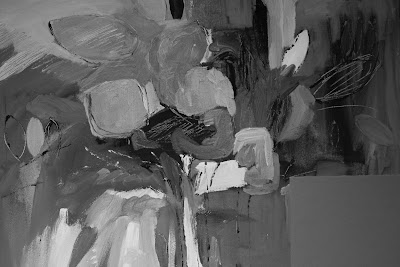









 This is part of a painting by Natasha Barnes, who lives in South Africa, and, I think, has a commission with IKEA! She seems to be a bit of a colourist. The photographs were taken with a Canon EOS 40D with 50mm macro lens, mounted on a tripod directly above the picture. I used flash as a light source because it's cloudy, dark and cold outside with 15" of melting snow. Grey card is bottom right, and the exposure was based on this. I used old Cokin filters in red, blue and green, before converting to greyscale using the easy greyscale button in Lightroom 2. The yellow filter is generated from Lightroom using the colour sliders (80% yellow, 3% the rest), but I'm not sure this has converted to b& w. This post reads from bottom to top.
This is part of a painting by Natasha Barnes, who lives in South Africa, and, I think, has a commission with IKEA! She seems to be a bit of a colourist. The photographs were taken with a Canon EOS 40D with 50mm macro lens, mounted on a tripod directly above the picture. I used flash as a light source because it's cloudy, dark and cold outside with 15" of melting snow. Grey card is bottom right, and the exposure was based on this. I used old Cokin filters in red, blue and green, before converting to greyscale using the easy greyscale button in Lightroom 2. The yellow filter is generated from Lightroom using the colour sliders (80% yellow, 3% the rest), but I'm not sure this has converted to b& w. This post reads from bottom to top.









